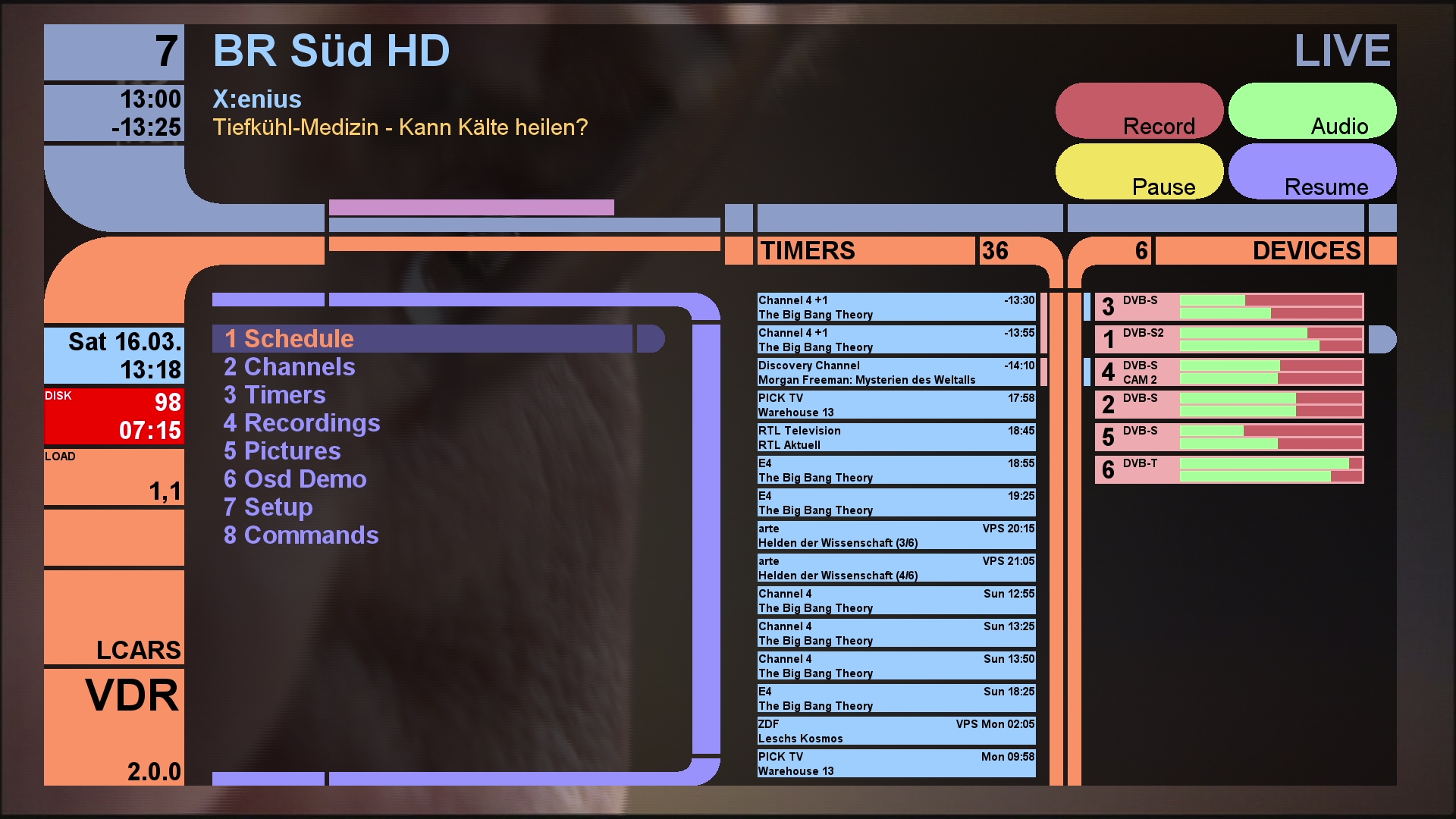
TV Done Right
|
Home
|
 © 2025 KLS |

(screenshot shows the OSD of version 2.0.0)
Version 2.7.7
now available
"VCR" was short for "Video Cassette Recorder", a device that recorded analog video on tape cassettes. When digital tv came up in the late 1990s, it was only natural to record that data on computer harddisks instead of cassettes. So, in the year 2000 the very first steps were made into programming a "VDR", which stands for "Video Disk Recorder".
Version 1 of VDR was able to record and play plain old SDTV. The new version 2 can now handle HDTV (High Definition Television).
Meanwhile there are several commercial products on the market that implement this functionality. Some of these systems are mainly targeted at working together with special services provided by the system manufacturer, which offer the consumer a personalized recording strategy - and sometimes are available only at extra costs.
The downside of these systems is often the lack of a really flexible "timer recording" facility, and the manufacturers' tendencies to implement new ways of imposing advertisements on the viewer (since it would become too easy to skip the commercial breaks). They also don't support what one would expect to come natural with digital recording: on-disk editing. And finally they won't let you get access to the actual recorded digital data (for instance for archiving).
There is also a very bad and dangerous development: "CI+". This new generation of Common Interface is aimed at keeping the consumers from recording digital video, or skipping commercials when viewing recordings. They can even go as far as define how long a recording can be viewed! Some tv broadcasters use this technology in their so-called "HD+" channels. The '+' in this name is apparently aimed at making consumers believe that this is "better than HD". Well, the only thing that is "better" about this is that you, the consumer, are limited in what you can do! So this should actually be called "HD--"!